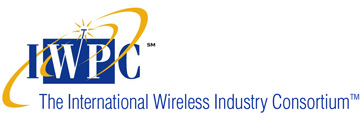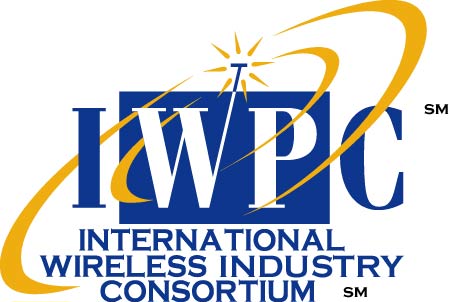Evolving SON Beyond
Network Efficiency
Dynamically Managing Access and Backhaul Capacity and Performance towards an Enhanced User Experience
Hosted by:

When
April 13-15, 2015
Introduction
The Self-Organizing Network (SON) market is projected to reach close to $6.5 Billion by 2020 and with around 35% of the global SON revenue market, North America offers a considerable opportunity, growing at a CAGR of 9.31% from 2014 to 2020. Network evolution continues through 3G and 4G to LTE-Advanced and in future 5G, so carriers need as much help as they can get to speed up the planning, configuration, optimization and healing of wireless networks. Since its introduction into 3GPP Release 8 in 2008, some carriers still question real benefits of SON, so during this workshop we will explore how SON can deliver an enhanced user experience.
Workshop Goals
- Consider the potential for D-SON, C-SON and Hybrid-SON, beyond basic network efficiency
- Explore SONs capabilities, limitations, constraints, and challenges
- Can SON deliver:
- Improvement in the operation and maintenance efficiency and effectiveness?
- Energy savings, CAPEX and OPEX savings and a reduction of manual resource effort?
- Enhanced user experience without adding unnecessary complexity?
- How will Virtualization and SDN impact SON evolution?
Agenda
|
DAY 1 Monday 7:00 PM |
Evening Reception |
Hotel |
||||||
|
DAY 2 Tuesday 8:00 AM |
Breakfast and Registration |
Hotel |
||||||
|
Tuesday 9:00 AM |
Opening Remarks and Self-Introductions Each person will be asked to introduce him/herself and show how they can contribute to this process. |
|
||||||
|
9:30 AM |
Host Keynote Opening Remarks and Presentation
|
Evolving SON VP, Network Development
|
||||||
|
10:30 AM |
Networking Break |
|||||||
|
11:10 AM
|
OEM/Vendor Perspectives and Technology Enablers:
|
SON - Beyond the Hype Challenges and Opportunities Director, Mobile Broadband Solutions
Cost Effective Deployment of Enterprise Small Cells Director, Advanced Performance @ Wireless CTO
|
||||||
|
12:30 PM |
Networking Lunch |
|||||||
|
1:30 PM
|
OEM/Vendor Perspectives and Technology Enablers:
|
Taking an End to End View of SON PE/MCTO
Practical Medium - Large Enterprise Deployment & Case Studies Director, Business Development
Ensuring Centralized SON (cSON) and Distributed (dSON) Interworking Senior Staff Engineer
|
||||||
|
3:30 PM |
Networking Break |
|||||||
|
4:10 PM |
|
Multi-Vendor from a SON Perspective Product Management
|
||||||
|
4:50 PM |
Panel Session |
Host, Carriers and OEMs |
||||||
|
5:30 PM |
Adjourn |
|||||||
|
6:30 PM |
Networking Dinner (LightFoot Restaurant) |
Bus transportation provided. | ||||||
|
DAY 3 Wednesday 8:00 AM |
Breakfast |
Hotel |
||||||
|
9:00 AM
|
OEM/Vendor Perspectives and Technology Enablers (continued)
|
Benefits of Electrical Downtilt in HetNets and Implications for SON Manager, Site Solutions
Managing Licensed and Unlicensed Access Integration Technical Marketing Engineer
Dynamic Management of Access and Backhaul Capacity VP and CTO Agility Division
|
||||||
|
10:00 AM |
Networking Break |
|||||||
|
10:40 AM |
OEM/Vendor Perspectives and Technology Enablers (continued)
|
Real-world Deployments of Centralized SON (c-SON) Technology Director
Client Executive
SON and Self-Healing in Unified 2G/4G RAN Founder
|
||||||
|
12:30 PM |
Networking Lunch |
|||||||
|
1:30 PM |
Technology Enablers (continued) |
Remote Fault Identification & Troubleshooting Wireless Systems Engineering
Resource Optimization Based on Predictive Behavior and Real Time Data CEO/CTO
How to Empower SON with Big Data Assistant Professor, Telecommunications Engineering
|
||||||
|
3:00 PM |
Networking Break |
|||||||
|
3:40 PM |
Closing Panel |
|
||||||
|
4:30 PM |
Adjourn |
|||||||
|
6:30 PM
|
Dinner (Dutch*) |
For those who desire to join us, we get together to enjoy good friends, good food, good wine, and (really) bad jokes. |
FAQs
- What is the deadline for presentation/handout materials?
- What can I do to prepare for speaking an at IWPC workshop?
- Who are the attendees?
- What are the costs/registrations fees?
- Hotel information?
- What are the travel options from the airport to the hotel?
- Are there any audiovisual requirements?
- Will business cards be collected?
- What is the dress code?
- How will handout materials be provided?
- What is the deadline for
presentation/handout materials?
Deadline for electronic version of presentation/handout materials: Thursday, April 2, 2015.
- What can I do to prepare for speaking an at IWPC workshop?
Click on the link below for a short video guide regarding preparing for and improving your IWPC presentation:
- Who are the attendees?
- We do not permit the Press.
- We do not permit Analysts.
- We do not permit Consultants.
- We do not permit 3rd party sales reps.
- We only permit "first hand knowledge experts" in business and technology issues, prepared to contribute to the discussion.
- What are the costs/registrations fees?
ALL Hosts, Speakers, Panel Members and Attendees will be asked to cover out-of-pocket workshop costs such as conference room costs, food (Social Reception plus First Day breakfast/lunch/dinner plus Second Day breakfast/lunch plus Breaks), audio/visual costs, etc.
These costs will be $ 945 USD per person. (For IWPC Members only.)
ALL Hosts, Speakers, Panel Members and Attendees will be asked to pay this fee in advance with either Visa, MasterCard, American Express, cash, personal check or business check. Make checks payable to IWPC.
- Hotel information?
Hilton Washington Dulles Airport
13869 Park Center Road
Herndon, VA 20171
Phone: +1 703-478-2900
Hotel WebsiteThe IWPC room block rate is $155.00. Click here to register online.
The cut-off date for reservations is March 30, 2015. After that date, rooms cannot be guaranteed at the IWPC rate.
- What are the travel options from the airport to the hotel?
Directions and transportation options will be posted as soon as possible.
- Are there any audiovisual requirements?
A Computer Projector will be available for the speakers.
In addition, we audiotape all presentations and the interactive discussions. Post workshop, presentations are made available to IWPC Members on the IWPC WEB site, along with “recordings” of all presentations and panel sessions.
- Will business cards be collected?
Business cards will be collected at the door from all attendees. We will make copies of these cards, which will be available to all who provided a business card.
- What is the dress code?
Business casual suggested. No ties, please!
- How will handout materials be provided?
For ALL IWPC members:
All IWPC members are invited to submit materials to be included in the online workshop folder in the IWPC Research Library. This should NOT BE SALES MATERIALS. Rather, we suggest it contain technical information about your technology as it relates to the workshop topics.
For all companies who will be making a presentation at the Workshop:
You are invited to submit an advance copy of your presentation, complete with graphics and illustrations.
These materials will be included on the IWPC website Research Library.
Please submit these materials either by email, as a Word for Windows file, Power Point files or PDF files.
Please use this FREE FTP site to send electronic materials (any size file):







